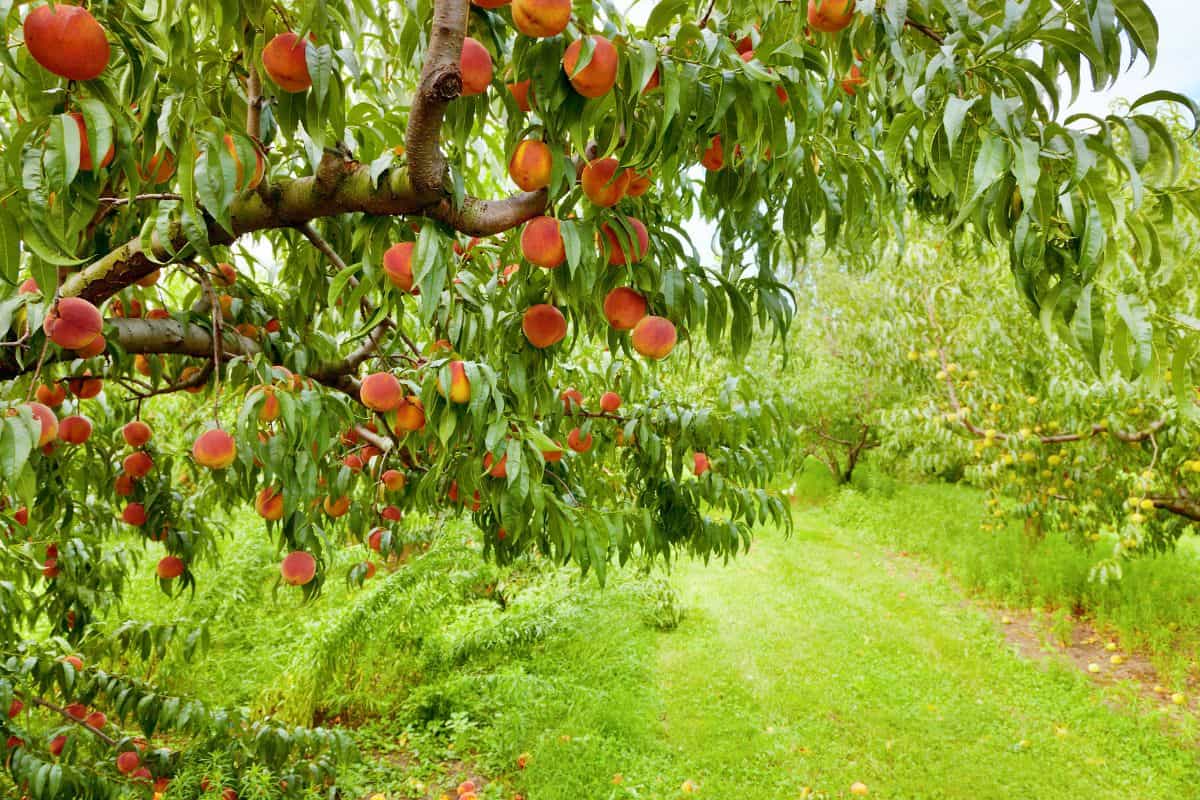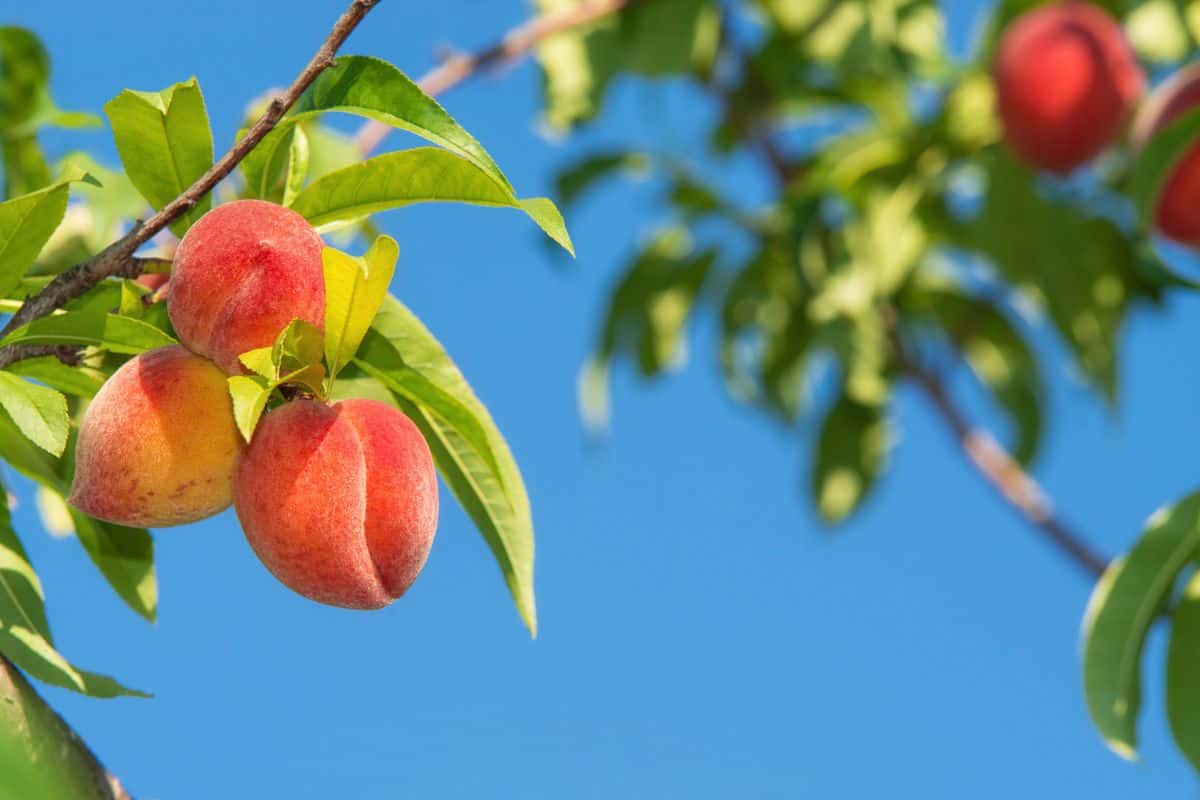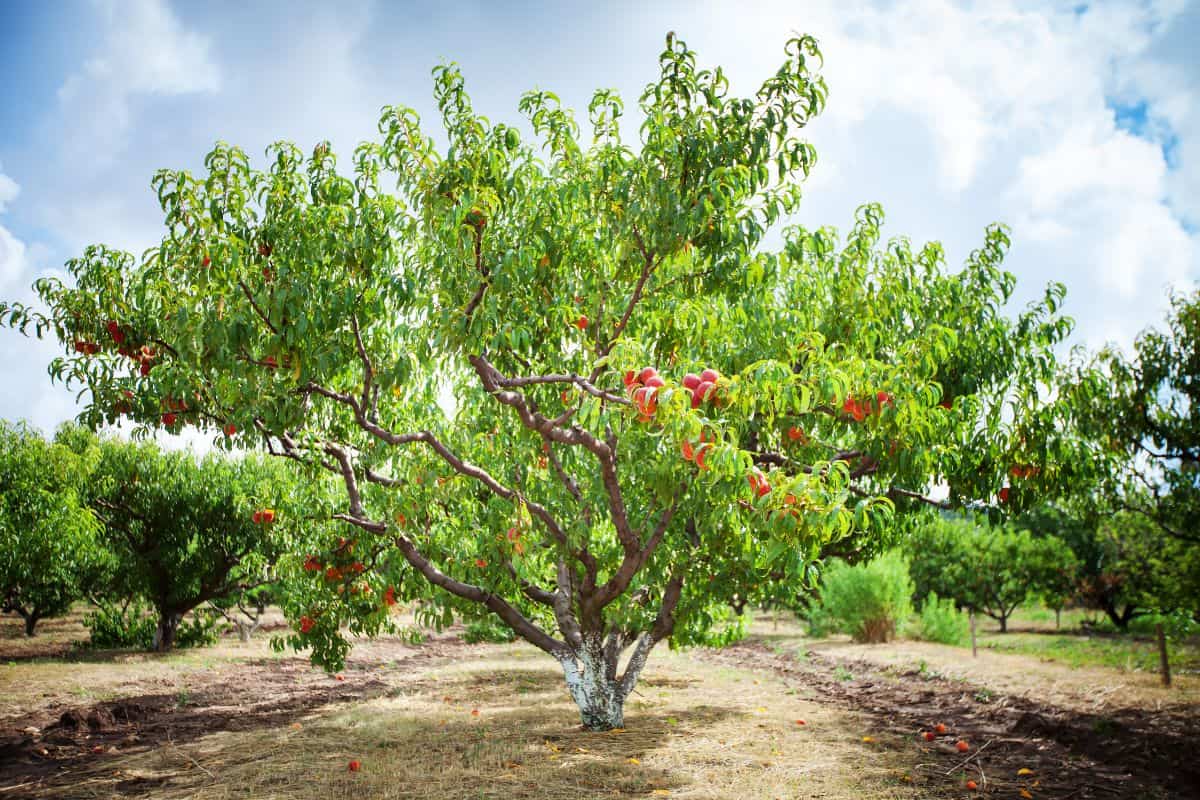Finding the best tree to add to your landscaping isn't always as easy as it seems. For example, do you want to plant a peach tree in your garden but don't know if it has a tap root or invasive behaviors? Are peach trees generally shallow rooting, or do they go deep into the soil?
Luckily, we've done plenty of research and have the answer below!
In general, peach trees do not have a tap root. Especially when you grow one in a landscape, you can expect its roots to stay within the first three feet of soil.
However, in the wild, a peach tree can develop a tap root/become aggressive, so that's something to remember. Peach trees may also develop roots that span 10-20 feet wide from the tree, so they cover a lot of land as they mature.
As we start this article, we will cover all things peach trees and discuss whether or not they have a tap root. If you want to plant this tree, have one already growing, or need help caring for a peach tree, we've got you covered. With that said, let's dive right into this topic!

What Kind Of Roots Does A Peach Tree Have?

Peach trees usually have shallower roots. Although one can develop a tap root in the wild, your peach tree won't typically do this in a garden setting.
That's because there won't be as much competition or a lack of nutrients, water, and ground space. Furthermore, a peach tree's roots aren't invasive in most settings, so they shouldn't bother others nearby.
As mentioned, the roots of a peach tree will go down about three feet into the ground. This is not nearly as deep as a tap root system, which can double or triple that.
A peach tree's roots stay shallow because they don't usually need to struggle to find water in a landscape. However, a peach tree may have to resort to more aggressive rooting to find a sustainable water source in the wild.
Access to resources is the leading cause of deep-rooting fruit trees in and out of the wild, so that's something to remember when choosing a spot for your peach tree.
Try not to plant it somewhere with many other trees or lack irrigation/soil nutrients.
Will A Peach Tree Develop A Tap Root?

Most times, a peach tree will not develop a tap root. As we said, your peach tree will remain shallow-rooted, taking up two to three feet in the soil below.
Therefore, it's not common for your fruit tree to develop a six- to 10-foot tap root in your garden because it doesn't need to struggle to find water and nutrients.
According to experts, one instance of peach trees forming tap roots is in the wild. A peach tree may need to develop a deep root system to access groundwater.
Lateral roots will grow from the central tap root, creating a complex web underneath the soil's surface. This can become a problem for nearby plants and structures, although in the wild, this isn't a problem.
Neglected peach trees will be the ones that have deeper root systems. Even though a peach tree will have wide roots regardless of location, the depth depends significantly on its conditions.
Larger, unkept peach trees can also become a problem above and below ground, so keeping your tree manicured and well cared for is a good idea.
Do Peach Trees Have Invasive Roots?
No, peach trees are not known to have invasive roots. Although more aggressive behavior is possible in the wild, a peach tree's roots will generally be easy to manage.
This fruit tree species don't need to become invasive because its roots are expansive. For example, a peach tree root's spread could be over 20 feet, giving the plant more than enough access to nutrients, oxygen, and water.
Invasive behaviors from fruit trees are also not something gardeners typically deal with. If you give your tree enough space from other plants in your landscape, there won't be a need for fighting or invasive behavior.
It's worth mentioning, however, that peach trees can damage foundations, pipes, and anything too close to them. Many experts warn against planting a peach tree right next to a home, sidewalk, driveway, or whatever goes below the soil.
Any time a tree becomes large above ground, the same thing happens below ground. A mature peach tree will have incredibly strong, complex roots, so keep it 20+ feet from your house.
How Close To A House Can You Plant A Peach Tree?
A good rule for gardeners planting peach trees is to give their plants 15-20 feet of space. Especially if you have various peach trees in your landscape, you need to leave enough room to avoid damage to your home's foundation, piping, and other structures.
One of the main concerns with peach tree roots is their spread. Remember, it's possible for a mature peach tree to have roots spanning 20+ feet.
If you plant your peach tree too close to your house, this can lead to serious damage long-term. Not only can the foundation of your property become at risk, but the pipes can also become entangled in your fruit tree's root system.
Therefore, we recommend giving 15-20 feet of space between your peach tree and your home. Even smaller peach trees can develop wide roots because they don't go deep into the soil.
Even though your tree's root system may only cover three feet deep, the width can become a major problem. Some gardeners may prefer to leave 25 or 30 feet between their tree and house for an extra few feet of wiggle room.
How Far Apart Should You Plant Peach Trees?

Similar to planting peach trees near a home, they also need space between each other. Typically, it's best to give your trees about 15-20 feet between each other.
However, for smaller "dwarf" peach trees, you can plant them 10-12 feet away from one another. A mature peach tree's size will determine the room it needs.
Smaller trees don't have as expansive root systems, meaning they can be closer to your home and each other. In contrast, normal-sized peach trees will become 15+ feet tall and have a root and foliage spread of 15-20 feet.
That makes them incredibly hard to train if you don't have enough space in your landscape. Many people make the mistake of planting wide-rooting trees in too small of a garden, causing structural and plant damage down the road.
Therefore, planning for a peach tree is crucial, even if that means only growing one or two. Unlike an orchard, your backyard may not have the ground capacity to sustain multiple peach trees.
Even then, a peach tree orchard spaces the trees 20 feet between rows and 20 feet within the row.
Do Peach Trees Need Partner Trees To Make Fruit?
No, peach trees are mainly self-fertile, meaning they don't need a partner plant to produce fruit. Therefore, if you have one in your landscape, it should be able to produce peaches independently.
One of the benefits of growing peach trees is that they're very independent and low maintenance. If you don't have room for two or more trees, that doesn't mean you can't still enjoy a bountiful harvest.
Having multiple peach trees together can speed up the fruiting process. For example, if you have a partner plant near your peach tree, this can encourage faster, better fruiting.
This is why you'll see many rows of peach trees in agricultural locations because the fruit responds better with neighbors nearby. Again, this is not required for peach production or harvesting, but it can be helpful.
Think of this as having two peach trees can give both a better chance at a productive peach season.
Where Is The Best Place To Plant A Peach Tree?

When growing and planting your peach tree, ensure it has plenty of sunshine, water, and fertile ground. Generally, a peach tree will thrive in full sunlight, around 6-8 hours daily.
Light is essential for fruit production and overall tree health, so this is the most crucial part of growing a peach tree. Furthermore, you want your tree to have access to water, or you risk its roots growing deeper into the soil.
Remember, peach trees do not like being neglected, especially with their watering. Drainage in the ground is another key player.
You want to make sure your peach tree gets enough water but not too much it drowns. This fruit tree species likes moist soil but won't react well to excess water for long periods.
According to experts, a fungus can develop on peach trees if there is too much stagnant water, reminding us to prioritize drainage for our trees.
Spacing is another big one when growing a peach tree. As we mentioned, you need to give your tree between 15 and 20+ feet of room between itself and other plants, structures, etc.
Without that space, you risk your tree damaging your home and plumbing and even becoming aggressive with other plants. The more room, sunlight, drainage, and access to nutrients, the better.
To Finish
Whether you have a peach tree or want to plant one, it's always good to know how they grow. We found that peach trees do not generally develop a tap root.
Instead, the roots of your tree should remain shallow, taking up three or so feet in the soil. Furthermore, peach tree roots can spread quite a bit, reaching 20+ feet upon full maturity.
So, although they aren't necessarily deep, your peach tree's roots can be extensive. You want to give about 20 feet of space between peach trees and other plants and structures, too, so that is a detail to remember.
And while we have your attention, check out these helpful related articles below:
Should You Mulch Around A Peach Tree?
Can You Grow An Almond Tree From An Almond? [Yes! Here’s What You Need To Know!]
